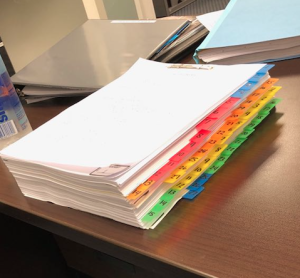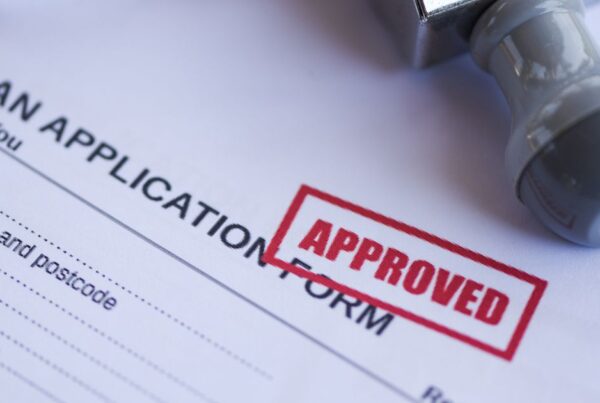An H-1B visa is a visa for foreign professionals coming to work in a specialty occupation.
The Immigration and Nationality Act (INA) defines the H-1B visa classification as a visa available for foreign professionals who will “perform services … in a specialty occupation.”[1] The INA defines “profession” as including “but not limited to architects, engineers, lawyers, physicians, surgeons, and teachers in elementary or secondary schools, colleges, academies, or seminaries.”[2] The term profession has been described as “contemplat[ing] knowledge or learning, not merely skill, of an advanced type in a given field gained by a prolonged course of specialized instruction and study of at least baccalaureate level, which is a realistic prerequisite to entry into the particular field of endeavor;”[3] or “requir[ing] a standard and at least baccalaureate level of university education for practice, in which that education is used and applied, and which requires extensive autonomous application of individual professional knowledge to particular fact situations.”[4] In the context of business related profession, the BIA[5] has said: “In addition to various scientific fields, highly specialized activities in business administration, finance, management, and the like require training gained only by an extended course of specialized instruction and study of at least the baccalaureate level.”[6]
Article continues after picture…
The regulations establish that the appropriate fields for specialty occupations may include, but are “not limited to, architecture, engineering, mathematics, physical sciences, social sciences, medicine and health, education, business specialties, accounting, law, theology, and the arts.”[7] (underline added). The regulations also say that the position must meet one of the following criteria:
- A baccalaureate or higher degree or its equivalent is normally the minimum requirement for entry into the particular position;
- The degree requirement is common to the industry in parallel positions among similar organizations or, in the alternative, an employer may show that its particular position is so complex or unique that it can be performed only by an individual with a degree;
- The employer normally requires a degree or its equivalent for the position; or
- The nature of the specific duties [is] so specialized and complex that knowledge required to perform the duties is usually associated with the attainment of a baccalaureate or higher degree.[8]
When it comes to supporting evidence, the H-1B petition must include “[d]ocumentation, certifications, affidavits, declarations, degrees, diplomas, writings, reviews, or any other required evidence sufficient to establish … that the services the beneficiary is to perform are in a specialty occupation.”[9] The evidence may also include “[c]opies of any written contracts between the petitioner and beneficiary, or a summary of the terms of the oral agreement under which the beneficiary will be employed, if there is no written contract.”[10]
The labor condition application (“LCA”) is the first step in the H-1B specialty occupation In the LCA attestations, the employer promises that:
- It will pay the required wage: the higher of the prevailing wage and the actual wage;
- It will provide working conditions for the nonimmigrant that will not adversely affect working conditions of workers similarly employed;
- There is not a strike or lockout in the occupational field at the place of employment; and
- It has provided notice of the filing of the LCA to the applicable union representative, or if there is no such representative, has provided notice of the filing through posting in the workplace or electronic notification to employees in the occupational classification.[11]
The adjudicator of an H-1B should “[c]onsider all the information provided by the petitioner in making [the] decision as to whether or not the position qualifies as a specialty occupation.[12] “Consideration of a claim to such eligibility [for H-1B status] first focuses on the tasks, demands, duties, and actual requirements of the position in question…. A petitioner must establish that the position realistically requires knowledge, both theoretical and applied, which is almost exclusively obtained through studies at an institution of higher learning. The depth of knowledge and length of studies required are best typified by a degree granted by such institution at the baccalaureate level.”[13]
To determine if the position is a specialty occupation, “[a] good reference . . . is the Department of Labor’s Occupational Outlook Handbook (OOH). The OOH outlines the duties normally performed by an occupation, and its basic educational and experience requirements.”[14] “Factors considered by the AAO when determining this criterion include whether the Department of Labor’s Occupational Outlook Handbook (Handbook), on which the AAO routinely relies for the educational requirements of particular occupations, reports that the industry requires a degree.”[15] “The AAO recognizes the [OOH] as an authoritative source on the duties and educational requirements of a wide variety of occupations.”[16]
The regulations and instructions for Form I-129 provide precise, detailed instructions on what types of documentation must be submitted in support of a petition. The petitioner shall submit a (1) certification from the Secretary of Labor that the petitioner has filed a labor condition application, (2) a statement that it will comply with the terms of the labor condition application, (3) evidence that the alien qualifies to perform services in the specialty occupation. 8 C.F.R. 214.2(h)(4)(iii)(B). The beneficiary shall submit (1) baccalaureate or higher degree (or foreign equivalent) required by the specialty occupation, (2) hold an unrestricted state license, registration or certification which authorizes him or her to fully practice the specialty occupation, (3) Have education, specialized training in the specialty occupation. 8 C.F.R. 214.2(h)(4)(iii)(C).
For more information about H-1B or any other type of visa contact us at 305-570-2208 or email at eayala@ayalalawpa.com
[1] INA §101(a)(15)(H)(i)(b).
[2] INA §101(a)(32).
[3] Matter of Sea. Inc., 19 Iamp; N Dec. 817 (Comm’r 1988) (citing former INA §101(a)(32) and Matter of Ling, 13 Iamp; N Dec. 35 (Reg’l Comm’r 1968)).
[4] Matter of Portugues Do Atlantico Information Bureau, Inc., 19 Iamp;N Dec. 194 (Comm’r 1984).
[5] Board of Immigration Appeals.
[6] Matter of Sun, 12 Iamp;N Dec. 535 (D.D. 1966).
[8] 8 CFR §214.2(h)(4)(iii)(A)(1)-(4)
[10] 8 CFR §214.2(h)(4)(iv)(B).
[11] INA §101(a)(15)(H)(i)(b).
[12] USCIS, “I-129 H-1B Standard Operating Procedures” (undated, posted July 26, 2007), AILA Doc. No. 07072668.
[13] Matter of Michael Hertz Associates, 19 Iamp; N Dec. 558 (Comm’r 1988).
[14] USCIS, “I-129 H-1B Standard Operating Procedures” (undated, posted July 26, 2007), AILAhttp://bit.ly/jun082d. Cf. Matter of [name not provided] WAC 02 220 54035 (AAO Feb. 3, 2006), http://bit.ly/feb064d. (reliance on OOH to determine that there has been no change in qualifications).
[15] Matter of [name not provided] EAC 06 136 50756 (AAO Nov. 13, 2007), http://bit.ly/nov074d (emphasis in original); Matter of [name not provided] EAC 06 216 52028 (AAO Sept. 8, 2006), http://bit.ly/sep066d.
[16] Matter of [name not provided] LIN 04 257 51922 (AAO Feb. 10, 2005), http://bit.ly/feb057d.







